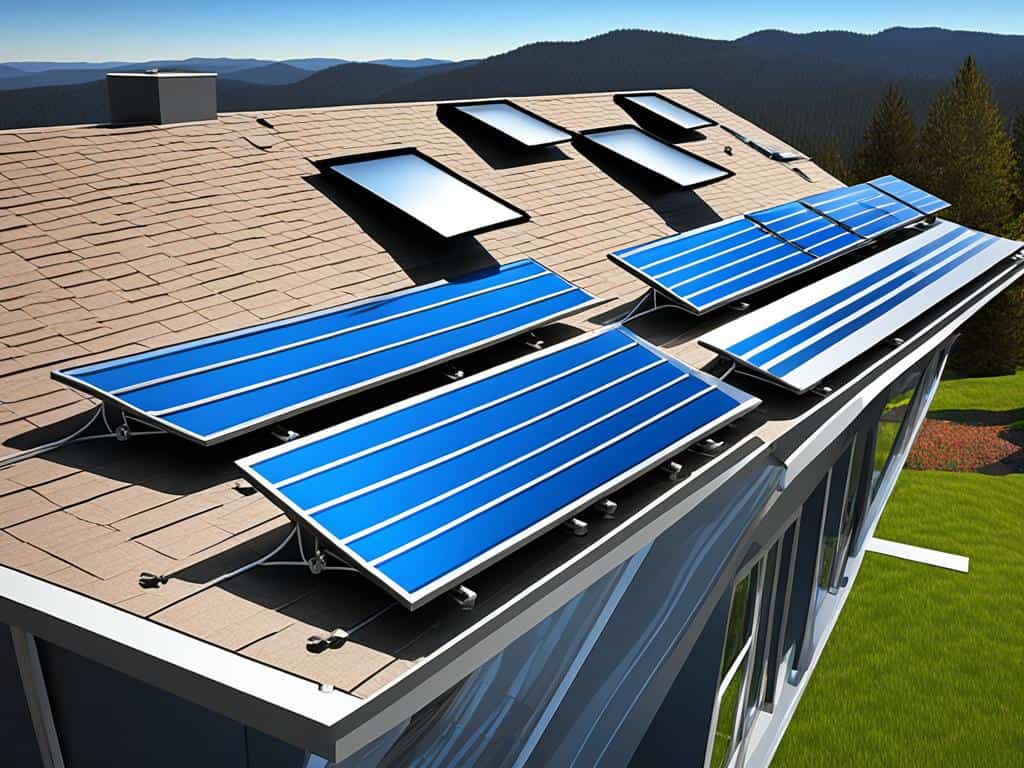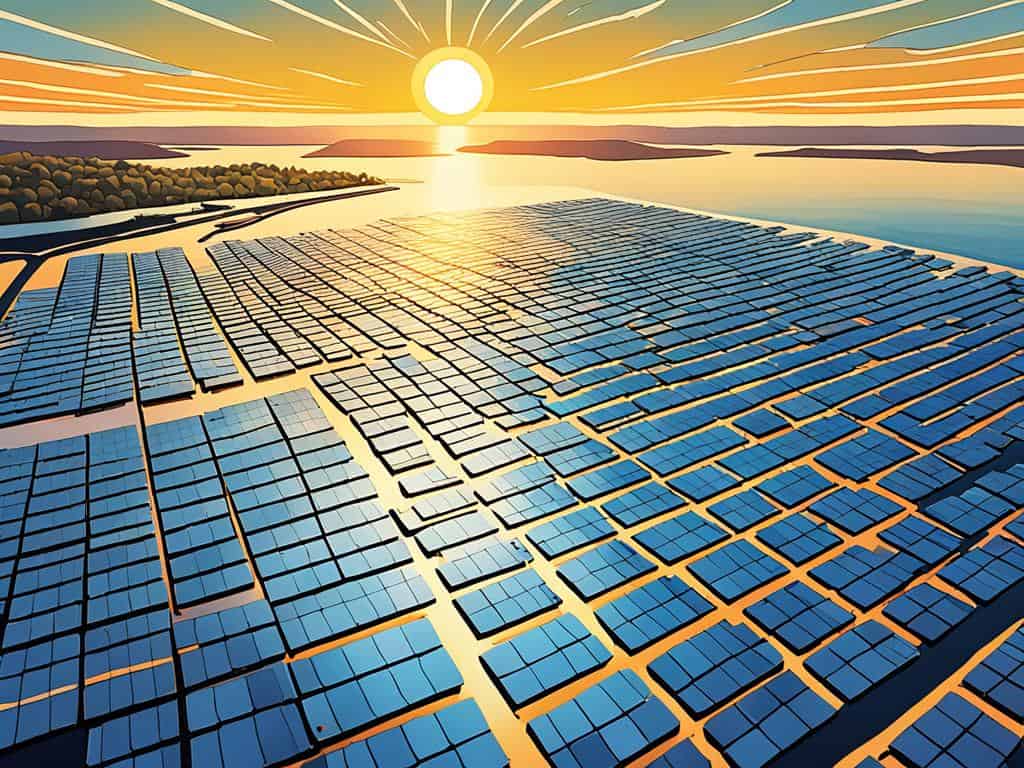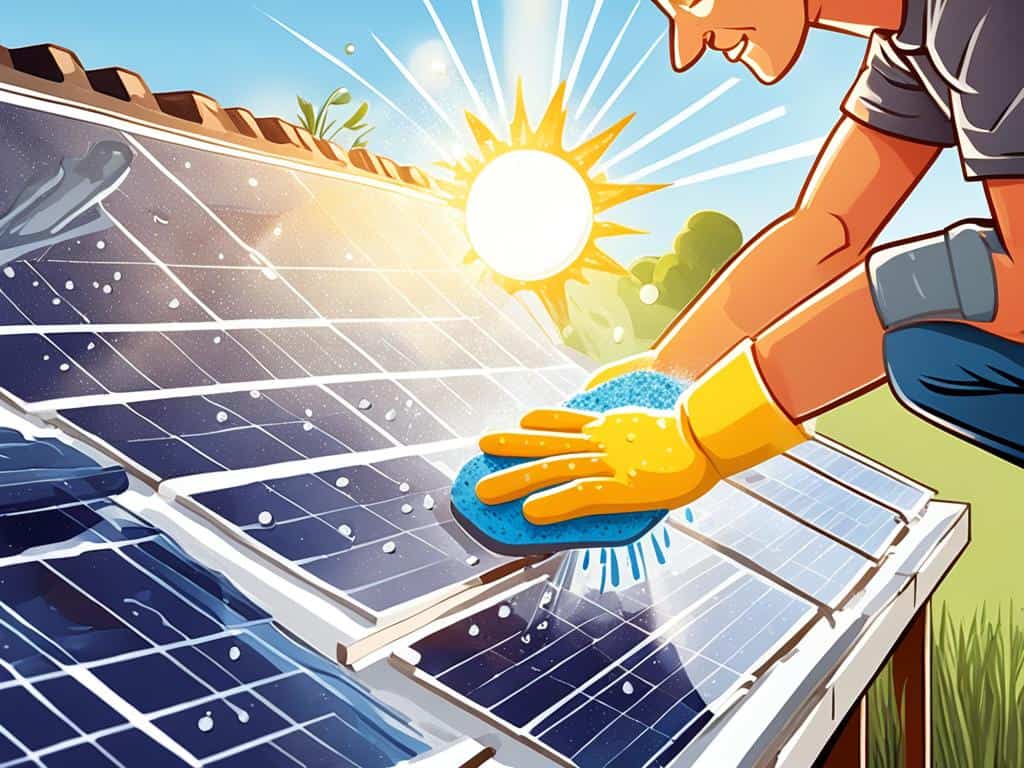Exploring Cutting-Edge Designs: Next-Gen Solar Collectors
Dive into the future of solar energy with our look at the latest solar collector innovations in renewable and sustainable technology.

The push for sustainable power has sparked a big change, thanks to solar energy. This highlight of green technology is getting more powerful with new tech. Leading this change is the solar collector, a symbol of renewal energy’s power. But there’s more. These solar advancements could do more than power your home. This idea opens the door to endless possibilities with photovoltaic systems made by leaders like Fenice Energy.
As prices drop, large-scale photovoltaic system costs in the USA have fallen. In 2020, they hit INR 70.89 per watt. India is joining the movement, where the sun shines bright and often. Here, solar energy is key to our green future. But what makes Fenice Energy stand out in this big change?
Key Takeaways
- The constant decrease in solar panel prices encourages wider use and brings us closer to energy freedom.
- Fenice Energy’s work on solar collector tech plays a big part in renewable energy’s role in our homes and more.
- As green technology improves, solar panels are becoming better and work in many places and situations.
- New tech is making solar power work smarter with energy networks, aiming for top efficiency.
- The coming times for sustainable power generation look promising, with better power storage and delivery leading us to energy independence.
The Evolution of Solar Energy Efficiency
Fenice Energy is leading the charge in the renewable energy movement, driving us towards a future with top-notch energy efficiency. Solar power tech has seen major upgrades in its journey towards sustainability. The push for better solar cells shows our creativity and commitment to science.

Breakthroughs in High-Efficiency Solar Cells
Over the last ten years, solar cell tech has made huge strides. For example, the Fraunhofer ISE created a III-V four-junction CPV cell that broke world records by hitting a 47.6% efficiency. Meanwhile, NREL has also surged ahead, reaching a 47.1% efficiency in the lab and setting a real-life record of 39.5% with triple-junction cells.
Perovskite Solar Cells: A Leap Forward
Perovskite solar cells are changing the game in solar energy. They’re set to boost the power of renewable energy and even transform solar heating because of their high efficiency and easy production. Perovskites could outshine traditional silicon cells, marking a big change in how we harness the sun.
Ushering in a Bright Future: Bifacial Solar Panels
Bifacial solar panels are making waves by capturing sunlight more effectively. These panels gather light from both sides, upping energy production especially in sunny areas like the Middle East and the Southwestern USA. It’s a significant leap forward for renewable energy.
| Region | Radiation Level | Annual Energy Yield (kWh) |
|---|---|---|
| Central Colorado, USA | High | ~400 kWh |
| Michigan, USA | Lower | ~280 kWh |
| Southern England, UK | Low | ~175 kWh |
The U.S. Department of Energy Solar Energy Technologies Office (SETO) is also on a mission. They aim to cut costs for CSP plants and support fully autonomous solar fields. Their efforts are making solar energy cheaper and more efficient, leading to a cleaner planet.
Revolutionizing Solar Panel Materials and Manufacturing
The advancement of solar technology is pivotal in moving towards sustainable energy. New materials and manufacturing methods have led to major breakthroughs in solar technology. Now, we are reaching levels of efficiency that seemed impossible before.
Today, the world is all about green tech innovations. Industry leaders are keen on reaching new energy milestones. This is essential for solar power’s future.
Recent data show a huge jump in solar cell efficiency. For instance, solar power cells now have more than 30% energy efficiency. This is largely thanks to perovskite-silicon tandem cells surpassing the 30% mark. Even traditional silicon cells, key to many systems, are nearing their limit at 29%.
Fenice Energy knows we must quickly grow solar tech use to fight climate change. To really make a difference, we need to increase solar installations significantly. The world’s current solar capacity is 1.2 terawatts. But to effectively tackle global warming, we need it to hit 75TW by 2050.

Solar innovators are setting new records in energy conversion. For example, research in Germany has delivered silicon-perovskite cells with 32.5% efficiency. A Swiss team has also shown impressive results, with tandem cells at 31.25% efficiency. This is a big step forward from the usual 24.5% efficiency of commercial cells.
Growing these high-efficiency cells larger is key. Oxford PV has made progress here, hitting 28.6% efficiency in larger cells. This shows that these advanced methods could soon be widespread. However, we’re still figuring out how long these cells last, as information on their wear and tear is scarce. But, with the efficiency limit expected to rise above 35%, Fenice Energy is hopeful for the future.
Solar energy has come a long way since its early days. It began in the 7th century BC, used for heating and cooling. The first practical solar cell came in 1954 from Bell Laboratories, with 6% efficiency. Several milestones have followed, including reaching 20% efficiency in 1985, and hitting 100 megawatts production in 2000.
Now, solar tech is advancing toward fully transparent panels. This new type of panel could provide a big part of US energy needs. Heliatek GmbH has made semi-transparent panels with 7.2% efficiency. Fenice Energy is excited to be part of this revolution, aiming for sustainable solutions.
India is eagerly adopting solar technology. Global partnerships, like those with Michigan State University, are reshaping how we use solar power. By working with leaders in the field, we hope to bring solar tech to every home. Fenice Energy, with its two decades of experience, is leading the charge in providing innovative solar solutions worldwide.
Innovative Solar Collector Applications
Solar energy is key in renewable energy growth. It has moved beyond just basic setups. Now, there’s a push towards energy efficiency. Innovations include floating solar farms, solar roof tiles, and flexible solar panels. These are changing how we use the photovoltaic system.
From Rooftops to Reservoirs: Floating Solar Farms
Floating solar farms are becoming more popular. They save land and use water to work better. This is great for crowded places, offering a smart way to meet renewable energy targets without using up land.

Collectors for solar power can be pricey, making up a big part of the costs for CSP plants. The U.S. Department of Energy Solar Energy Technologies Office (SETO) wants to make them cheaper. This will make solar power more affordable and accessible.
Solar Roof Tiles and Shingles: Aesthetic & Sustainable Solutions
Solar roof tiles blend solar tech with home design nicely. They offer environmental perks as well as style. Thanks to companies like Fenice Energy, merging renewable energy with home improvement is easier. This blend of efficiency and design is becoming more common.
In India, buildings consume lots of energy. Using efficient solutions like solar roof tiles can really help. Fenice Energy works to make tailor-made solar roofing. This is changing India’s energy scenario significantly.
Flexible Solar Panels: Pioneering Portable Power
Flexible solar panels bring a new edge to solar technology. They’re light and can bend, fitting odd surfaces and for mobile use. This innovation makes solar power available in more places. It’s a step towards making solar power everywhere a reality.
Fenice Energy sees the value in these portable panels. SETO supports projects to lower their costs. This aims to make such tech widely available, especially in developing nations like India.
Enhancing Renewable Energy with Next-Gen Tech
Next-generation technology is merging with renewable energy. This trend is shaping a future where solar power is key to our energy mix. Fenice Energy leads this change, using new advancements to improve solar energy solutions. Their focus on smart energy systems is making sustainable energy a smart choice for homeowners in India.
Smart Energy Systems: Home Integration and Automation
Fenice Energy brings smart energy systems to modern living. These systems let homeowners manage their energy use easily. They provide real-time adjustments and monitoring, making energy use efficient and sophisticated. As solar energy becomes central to smart homes, these systems are crucial. They make using and storing solar power easier and more effective.
The Symbiosis of Solar and Storage
Linking solar energy capture with storage is vital for steady energy. Fenice Energy’s solar solutions ensure reliable energy storage. Their solutions are efficient, with up to 33.7% efficiency possible using tandem cells. Solar power in India has great potential. With perovskite cells already over 21% efficient and long-lasting, solar investment is smart environmentally and financially.


